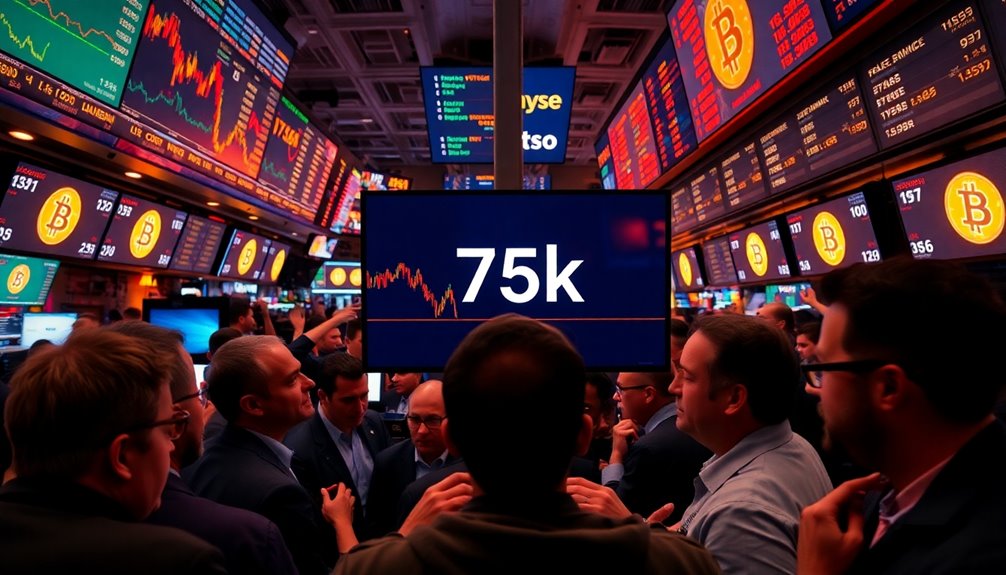You've likely noticed the buzz around Bitcoin's recent alert about a potential drop to $75,000. This has sparked a heated discussion among investors and analysts. Is this a sign that the bull run is losing steam, or do strong institutional backing and demand for decentralized assets suggest otherwise? As uncertainties loom, the market's next moves could be pivotal. What do you think will happen next?

Bitcoin's recent price fluctuations have raised a red flag for investors, especially as it hovers around critical support levels. After a notable drop below $100,000, many are questioning whether we're seeing the end of the current bull run. Currently, Bitcoin's price has been fluctuating between $89,000 and $109,000, creating a sense of unease among traders. Key support levels at $96,000 and potentially $91,000 are in focus, and if these levels fail to hold, you might want to brace for further volatility.
The market sentiment reflects a cautious stance, largely due to rising trade tensions between the U.S. and its major trading partners, like China. These tensions, along with recent tariffs, could lead to inflationary pressures that negatively impact investor sentiment across cryptocurrency markets. The Federal Reserve's interest rate policies also play a significant role; their hawkish or dovish approaches could either bolster or undermine Bitcoin's price. Given these geopolitical factors, uncertainty looms, prompting many to reassess their strategies. Notably, there is a 99.5% probability that the Federal Reserve will maintain interest rates, which has been factored into Bitcoin's price movement. Understanding high volatility risks can help investors navigate these uncertain times.
Despite the turbulence, institutional interest remains a silver lining. Firms like BlackRock continue to accumulate Bitcoin, which helps create a safety net against drastic falls. This backing suggests a long-term optimism that might counteract some of the current volatility. However, it's essential to remain vigilant, as technical indicators show Bitcoin trading below its 50-day EMA, signaling potential downward pressure.
Analysts are divided, with some predicting a rise to $122,000 by February, while others warn of a possible drop to $75,000. On-chain data also paints a mixed picture, revealing a 22% probability of Bitcoin hitting $75,000 by March. Such predictions might sound alarming, but they're part of a broader conversation about Bitcoin's resilience as a decentralized asset in times of global economic uncertainty.
The fear and greed index currently reflects a neutral sentiment, indicating that while caution prevails, there's still a degree of optimism about Bitcoin's long-term potential. As you navigate these uncertain waters, keep an eye on developments like active ETF filings, which could lend greater legitimacy to digital assets.
In the end, while Bitcoin's price may be in a precarious position now, the underlying institutional support and demand for decentralized assets suggest that this is a moment of recalibration rather than an outright end to the bull run. Stay alert and informed; the crypto landscape can shift rapidly.









